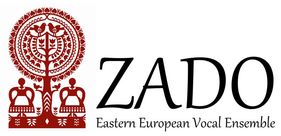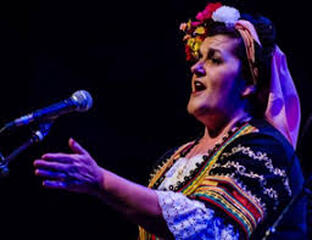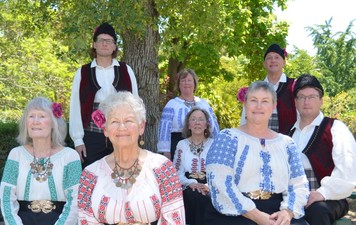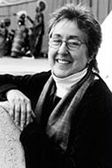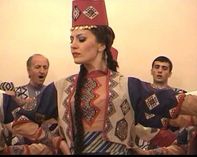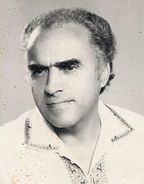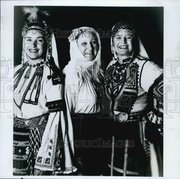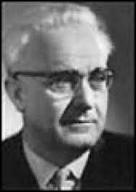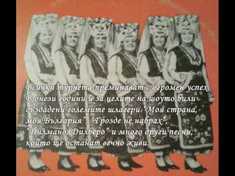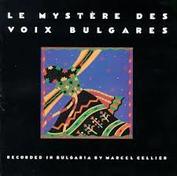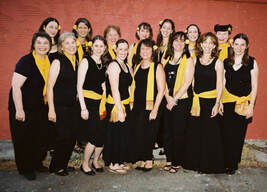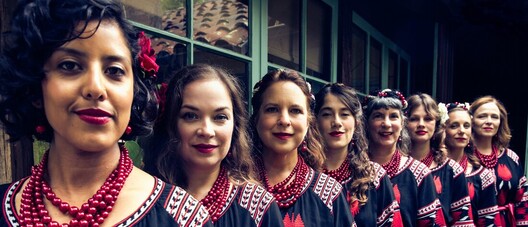News, Links, & Inspirations
Auditions
Interested in World Music/Balkan singing? Looking for musical adventures? Our group seeks new singers with accurate intonation, rhythmic capability, strong group singing skills, and engaging stage presence.
Contact: zado@zadosings.org Bulgarian Styles of Folk SingingRegional Styles - Traditional and Modern
Each region has a distinctive style. The Bulgarian people take pride in the songs and vocal styling even today. More recently, traditional village melodies have been embellished and refined into popular, modern compositions—sometimes containing classical, impressionistic, and jazz musical elements. Four Major Areas of Bulgarian Singing Styles:
SHOPE Region - Traditional Style Traditionally songs of the Shope region consisted of two parts (melody and drone). Traditional Shope singers loved to sing in very close harmonies and both open or regular rhythms. SHOPE Region - Modern Compositions In the 1960s, Bulgarian composers began creating modern arrangements. Philip Koutev started a vocal ensemble in Sophia with the best singers in the villages, which evolved into Le Mystere des Voix Bulgares. Koutev and other composers created embellished compositions based on folk songs that still embody the feeling of the original songs.
RHODOPE Region - Traditional Style Rhodope style of singing is influenced by the bagpipe they play (the Kaba Gaida), which is much larger and lower in pitch than gaidas from other regions. Rhodope women sing lower in pitch as well, and vocalization is generally softer. The style is usually single-voice or unison singing of melodies, with lush vocal ornaments with even rhythms (2/4, 4/4)
Koutev arranged songs from the various regions of Bulgaria. Many of the well-loved compositions are from the Rhodope region, with beautiful flowing harmonies.
PIRIN Region - Traditional Style The Pirin region of Bulgaria is close to Macedonia on the west. 7/8 rhythms (3-2-2) are common in the Pirin region (7/8 = Lesnoto dance form) and in Macedonian dances. The singing style is similar to Shope singing, i.e., songs frequently consisted of two parts (melody and drone) and sung in close harmonies with frequent dissonances. The singing works best if the timbres of the melody and drone voices are matched. PIRIN Region - Modern Composition Two more modern Pirin compositions are arrangments by Philip Koutev. The first, "Dumaj Zlato," is in 7/8 rhythm but sung more free form to allow for the expressiveness of the lyrics. The second, “Zaspala E Fida,” begins with 9/16 (2-2-2-3) rhythm and changes midway to 8/16 rhythm. THRACE Region - Traditional + Modern Style The largest and most representative folklore region in Bulgaria is the region of Thrace. In Thracan music, you’ll hear quarter tones and Turkish-influenced scales, complex rhythms based on village folk dances, and various vocal techniques. Janka Rupkina was a most famous Bulgarian singer from Thrace. She was the soprano and lead singer of Le Mystere Des Voix Bulgares and Trio Bulgarka. She was known for her extensive ornaments and haunting sounds. The current most famous and beloved singer from Thrace is Tsvetanka Varimezova, current Professor at UCLA and mentor to many Bulgarian singers and singing groups throughout the world. THRACE Region - Modern Style A famous Thracian modern composition is "Kalimankou Denkou," which includes Ottoman-influenced musical scales and a stunning performance by Janka Rupkina. A well-loved composition by Koutev is Dragana i Slavei. |
Inspirations2018 Album: Our 2018 album features a cappella songs as well as songs with instrumental accompaniment and include dance tunes that have special meaning for us. We have particularly focused on reviving a number of older folk songs and dances that are memorable:
1985 Album: Our 1985 Zadovoljan album included a wealth of Bulgarian songs, particularly those arranged by Philip Koutev:
Our group was inspired by the striking and beautiful music of Philip Koutev and the singers who gave life to the beautiful music. Some of the Koutev songs were sung by the choirs that were part of Le Mystere des Voix Bulgares - The Mystery of Bulgarian Voices, which became very popular during the 1980s. A first album of Le Mystere was released in the U.S. in 1987 as a compilation of modern arrangements of old folk songs, which created a new choral tradition. It was a fusion of folk elements with western classical forms and harmonies. Volume 2 of Le Mystere was ranked by NPR as one of the greatest albums ever made by women. Our group also loved songs from the Rhodope region. We recorded a song we learned from the Kushlevi sisters, "Si Dyala Dona Radoljo," and also a song we learned from Jaap Leegwater, "Kitko Zelena." |
